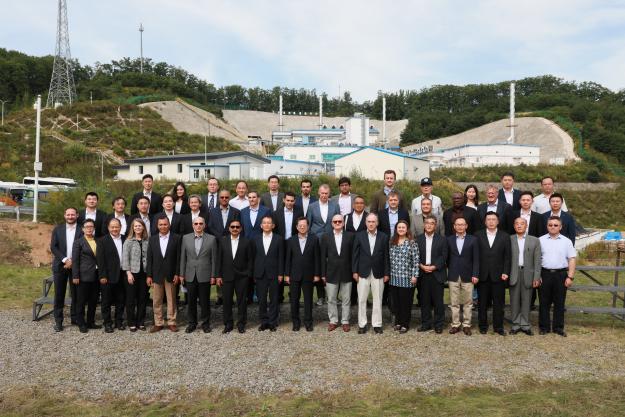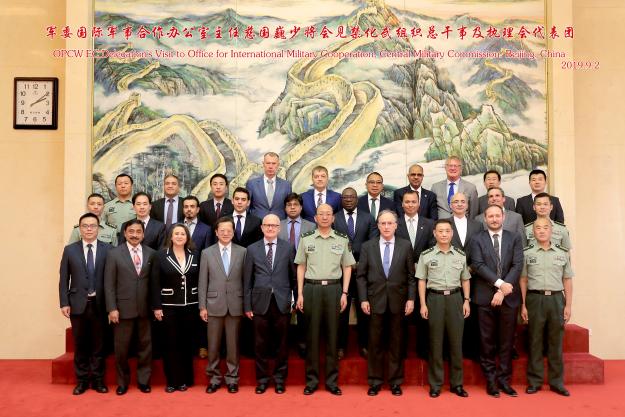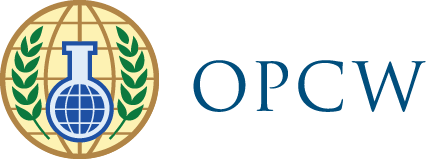
A delegation representing the OPCW's Executive Council visiting the People’s Republic of China
THE HAGUE, Netherlands — 9 September 2019 — A high-level delegation representing the Executive Council of the Organisation for the Prohibition of Chemical Weapons (OPCW) visited the People’s Republic of China from 2-7 September to assess the status of efforts to destroy chemical weapons abandoned by Japan on the territory of China.
The visit provided an opportunity for the delegation to better understand the technical and administrative issues associated with the recovery, identification and destruction of abandoned chemical weapons (ACW) in China. To date, an estimated 76,300 ACW-related items have been found at over 90 locations throughout China. Of these, over 53,500 of the around 76,300 items of declared ACW on the territory of China were destroyed as of 31 May 2019.
Led by H.E. Ambassador Andrea Perugini, Chairperson of the OPCW Executive Council and Permanent Representative of Italy to the OPCW, the delegation visited the Haerbaling Abandoned Chemical Weapon Destruction Facility, located in Jilin Province in north-east China. The Haerbaling site is estimated to contain approximately 330,000 ACW-related items. This includes both items that have already been destroyed and those requiring excavation and identification before the destruction process can be initiated.
Ambassador Perugini underscored the Council’s appreciation for the cooperation between Japan and China in resolving this complex issue as “many items remain buried and continue to pose potential harm to the local populations across China”. He expressed: “The Executive Council remains committed to supporting both countries in their ongoing efforts to rid China of the remaining abandoned chemical weapons.”
The delegation received briefings and met with a number of Chinese and Japanese government officials, including: Chief, Office for International Military Cooperation of the Chinese Ministry of National Defense, Major General Ci Guowei; Director-General, Department of Arms Control of the Chinese Ministry of Foreign Affairs, Mr Fu Cong; and Director-General, Abandoned Chemical Weapons Office, Minister’s Secretariat, the Cabinet Office, Mr Masahiro Akase.
During the visit, the OPCW’s Director-General, H.E. Mr Fernando Arias, also held bilateral meetings with the Chinese Vice Minister of Foreign Affairs, H.E. Mr Le Yucheng, and the Director-General, Department of Arms Control, Chinese Ministry of Foreign Affairs, Mr Fu Cong. Mr Arias also visited an OPCW Designated Laboratory and met with the Dean of the Academy of Military Medical Sciences, Major General Zhang Shitao, who, on behalf of the OPCW Designated Laboratory located at the Academy, signed a technical agreement on broadening cooperation with the OPCW.
The delegation will issue a report to the OPCW Executive Council that encapsulates its findings related to the progress of ACW destruction. The OPCW Executive Council will consider the report at its next meeting from 8-11 October 2019.
Funding was provided for the OPCW Executive Council group representatives of the developing countries using the voluntary contributions available under the terms of projects of the decision adopted by the Council of the European Union in the framework of the implementation of the European Union Strategy against Proliferation of Weapons of Mass Destruction.

A delegation representing the OPCW's Executive Council visiting the People’s Republic of China
Background
The Chemical Weapons Convention provides a framework for facilitating destruction of ACW. It stipulates that Japan, as the Abandoning State Party, is required to provide all necessary financial and technical means, as well as expertise, facilities and other resources, to destroy declared ACW. As the Territorial State Party in this case, China provides an appropriate level of cooperation.
As the implementing organisation of the Convention, the OPCW is mandated to verify the destruction of ACW as well as providing technical support as required. Following the OPCW Executive Council’s approval of a destruction plan and timeline for destruction of these weapons, the OPCW verifies destruction operations through a combination of physical presence during on-site inspections, the use of monitoring and recording equipment and review of relevant documentation.
As the implementing body for the Chemical Weapons Convention, the OPCW, with its 193 Member States, oversees the global endeavour to permanently eliminate chemical weapons. Since the Convention’s entry into force in 1997, it is the most successful disarmament treaty eliminating an entire class of weapons of mass destruction.
Over 97% of all chemical weapon stockpiles declared by possessor States have been destroyed under OPCW verification. For its extensive efforts in eliminating chemical weapons, the OPCW received the 2013 Nobel Peace Prize.
